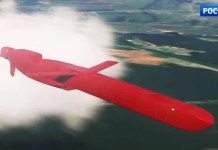India’s successful launch of the Chandrayaan-2 Moon mission has caught the attention of the global community. China, in particular, has shown a keen interest in working with India on joint lunar missions in the future.
Chandrayaan-2 Successfully Launched; India Set To Emulate US, Russia and China
In a statement by China’s Foreign Ministry, it is stated that Beijing welcomes the beginning of India’s Chandrayaan-2 mission.
“We are ready to join forces with India and other countries to carry out lunar explorations,” said the Chinese Foreign Ministry spokesperson Hua Chungying. Along with this announcement, there have been other instances where China has bestowed praise towards India’s indigenous mission to the Moon. The Chandrayaan-2 is India’s second mission to the Moon and is slated to gather data and images from the Moon’s south pole-a region that has been little explored.
The chief of China’s lunar exploration program, Wu Weiren congratulated India on its success. If all parameters are met, India could become the fourth country to make a safe landing on the Moon behind the USA, Russia and China.
In the foray where the space missions have become more covert than ever, the world sees the two nations as major players. China specifically has been aggressively pushing for dominance in the space race. The launch of the Chang’e -4 lander and rover to the far side of the moon, the first of the kind, has been one of China’s most ambitious ventures.
This launch has particularly irked the US owing to the prospect that China might aggressively compete in this domain. The space race has considerably taken a rather ominous turn where now there is potential militaristic value attached to these missions.
The initiative of a ‘space force’ by the US and certain other nation is a dialogue in this direction and there is strategic, geopolitical value in such initiatives. Experts see the Chang’e-4 launch as a form of soft power display while slightly increasing the power dynamics to tip towards Beijing.
There have been determined efforts to devise internationals outputs on the Moon between 2023 and 2027. A Chinese crew is deemed to set foot on the Moon in 2030. There have been many ambitious plans charted out for China in the coming years which could most certainly propel their influence in research and technology worldwide. China had a record number of 38 launches last year alone; more than any country.
In the case of India, one can find a steady and strategic effort placed towards space explorations. It was an Indian mission that found traces of water in 2008, a monumental success. The impressive launch of 104 satellites on a single mission has led to India having the distinction of most satellites launched in a single mission. The record was previously held by Russia with 37 satellites.
The consequent launches have been integrated and successfully manifested as there has seldom been a failed launch at Indian Space Research Organisation (ISRO). There are also several policy changes in the works with the Indian government considering to draft a “Space Activities Bill”. The recent launch of the anti-satellite missile test (ASAT) has particularly concerned the American agencies which see the manifold Indian progress troublesome.
The collaboration of ISRO and Defence Research and Development Organisation (DRDO) is a sign of India’s entry to facilitate military counter-space capabilities. The ASAT mission has been a paradigm shift in policy from a nation that has more often than not projected itself as being ‘peaceful’.
ISRO Picks Russian Glavkosmos For Gaganyaan Astronaut Training Programme
India and China have engaged in a rather aggressive manner to ensure their place in space exploration. There is an East-leaning trend in the space race and that could be detrimental to the already established players.
The two nations have been cultivating a system of manufacture that is indigenous, cost-effective and value-based. The Mangalyaan mission, undertaken by India, was priced at a value much less than the budget of the movie “Gravity” (2013).
The Chinese counterpart China National Space Administration (CNSA) is said to feature manned missions to Mars in 2030 and manned missions to the Moon, soon. They are also suggesting to send rovers and lander to the orbits and surfaces of Jupiter and Uranus.
India is currently working on a manned mission to the Moon by 2022 in the ambitious Gaganyaan mission. The possible collaboration with China could be seen as a manner of putting to rest the geopolitical unrest that ensues between the two nations. China and India are slowly turning the tides in space exploration as there is a very intensive trend as the space race has shifted the paradigm to the East.




